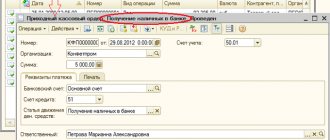In an organization, LNA is a set of mandatory documentation regulating the internal structure of the enterprise. The abbreviation stands for as follows: local regulatory act. The documentation is valid only within the company that issued it and applies only to employees. Most LNAs regulate the specifics of the work process, the procedure for calculating remuneration, and tariffs, although this does not exhaust the full range of diversity.
General overview
The company's LNA is not tyranny or arbitrariness, but legal documentation based on the current legislation and completely subordinate to it. All provisions included in such a set of documents must comply with the requirements of codes and legislative acts of various levels. Contradictions to the Constitution and violation of human rights and freedoms are unacceptable. A company that has allowed this to happen when formulating its own LNA will be liable to the courts if this fact is discovered.
The development of LNA involves the participation of lawyers, HR specialists and other professionals managing the enterprise as a whole and its departments in particular. For a company, LNAs become local laws that completely control the behavior of people on the territory of the enterprise. The documentation is developed by the enterprise specialists responsible for this and approved by the head of the company, after which it is used to regulate a wide variety of areas of activity. It is through the LNA that it is determined how to behave in a given situation.
Develop, approve, agree
Local regulations have a certain procedure for execution, which is established by an internal order of the head. Various specialists, including heads of specialized departments, can take part in the development of LNA: issues of remuneration are supervised by an accountant or economist, internal regulations are drawn up with the participation of a personnel officer, etc.
After all the details are spelled out in detail, the document must be agreed upon with other structural units. Experts convey their comments in writing.
The Labor Code approves the rule to coordinate local acts also with a trade union organization or with a representative body of workers ( Article 372 of the Labor Code of the Russian Federation ). Within five days, their representatives can put forward their proposals in writing. But we must remember that these formations are voluntary; they may not exist at the enterprise. In this case, the manager approves the documents independently.
Everything must be right
Knowing what LNA is, you should understand what opportunities there are and what responsibilities arise for different individuals. For example, an employee who has officially read the local documentation, but has violated the norms of behavior declared by it, may be held accountable. Knowing this, a person receives an incentive to comply with established standards within the work space.
At the same time, official familiarization with LNA is a method of stimulating staff. The documentation specifies under what conditions which employees can count on concessions or preferences. Understanding their benefits perfectly, people are interested in working efficiently to get the best result.
What are we dealing with?
Specialists, especially workers who ensure high-quality document flow, should know especially well what it is - LNA. Not every document accepted within the company belongs to this class of documents. This includes exclusively legal and organizational acts approved in the appropriate manner. Usually these are instructions and regulations. Often the role of LNA in an enterprise is played by rules and regulations.
Knowing what LNA is, this understanding can be applied in practice by assessing the total volume of documents within the company. At the same time, it is worth remembering some characteristic differences between this group of documentation and all others present in the company. The most informative source of information is the resolution of the plenum of the Supreme Arbitration Court, issued in 2007 under number 48. It was then that the meeting was devoted to the issue of defining LNA.
Who should adopt internal acts and when?
The relationship between employer and employees is regulated by labor law. The Labor Code of the Russian Federation specifies many aspects of these relations, but not all of them are strictly regulated. Some issues are resolved by the employer independently or by agreement with the employee. It is precisely in order to consolidate such moments within the company and make them mandatory for execution that local regulations are adopted.
An example is the work schedule. In particular, Article 91 of the Labor Code of the Russian Federation states that the standard working time is 40 hours per week . At the same time, the norms of the Code do not regulate what time the working day should begin and how long the working day can be. It is understood that these points will be enshrined in local acts.
Internal regulations are adopted by all employers. There are no concessions in this sense for individual entrepreneurs - they, just like organizations, have labor relations with hired personnel. However, it is possible not to draw up LNA for micro-companies where no more than 15 people work and the annual income does not exceed 120 million rubles. In this case, all mandatory provisions must be specified in the employment contract. Also, local acts are not drawn up by individuals who are not registered as individual entrepreneurs, but attract hired workers.
How about more details?
You can understand what it is - LNA, if you refer to the mentioned resolution. It pays the greatest attention to state-level documentation, but there is the possibility of drawing parallels with the office work of a specific legal entity. Based on this analysis, it seems correct to identify the most characteristic distinctive features that define the LNA against the background of other documents.
One of the most important conditions is the paper creation procedure. Official procedures must be followed. The document must contain standards, general rules regulating the activities of certain persons or processes occurring within the company. The range of positions specified in the LNA must comply with the provisions of this document. One of the main conditions is the possibility of repeated use. Good examples of LNA are orders for core activities.
How are LNA issued?
Some acts have a generally accepted form, for example, the staffing table - T-3. The forms are not strictly required and can be customized to suit your company. But there are mandatory inclusions that you can’t do without:
- company name;
- title of the document (instructions, regulations, etc.);
- date of approval and details of the order.
The pages of the act are numbered, the document itself is stitched and sealed. If there are attachments to the act, indicate them and attach them to the document.
Attention! The team’s opinion is reflected on the first page with the phrase: “ AGREED.” Minutes of the trade union committee meeting dated December 10, 2015. No. 1. "
For example, here is a sample of the Regulations on the passage.
What happens?
Mandatory LNAs are orders regulating the activities of the company. This includes various administrative official documents designed to organize interaction in the workplace. In addition to the orders themselves, you can issue instructions, publish rules and approve working regulations. Often, the conditions for belonging to the LNA correspond to documents drawn up during a meeting, as well as notes, acts, agreements, correspondence generated during the work process.
As follows from the transcript, LNAs are intended to normalize the work process. Therefore, all documents of this type must be drawn up in a single form. This is prescribed when the office management instructions are approved at the enterprise. It is equally important to declare the procedure for assigning details, which allows you to navigate in all LNA within the company.
Orderliness in everything
To ensure that all mandatory LNAs at the enterprise are not only formatted in the same style, but also understandable to all personnel, special formatting rules should be used when forming them. It is recommended that these be agreed upon individually within each specific organization and approved after assessing the opinions of all interested parties. The opinion of the department responsible for the formation of a unified corporate style is considered the most compelling. Often, already at the stage of accepting the very first documents, the company publishes a document regulating what colors, fonts and other features must be used when formatting the text.
Such little things may not seem too important to others, because the essence of deciphering the LNA is normative acts, that is, designed to regulate the behavior of personnel. And yet, do not underestimate the unity of stylistic design. This creates a favorable impression and makes it clear how seriously the company takes the work process and is demanding of details. All this allows us to set the staff (without exceptions) in a working mood and raise a collective sense of responsibility.
What is LNA: decoding and meaning
The abbreviation stands for simply:
- L - local, that is, valid at a specific enterprise;
- N - normative, that is, establishing rules for a given organization;
- A is an act, that is, a document.
Both the employer and employees are required to comply with the rules contained in the LNA. Provided that there is no conflict with current legislation. This is a requirement of Article 8 of the Labor Code. To put it simply, local regulations are like states or republics: each has its own internal laws, but in general they are subject to the Constitution of the country.
| Valentina Mitrofanova will tell you what's new in labor legislation this week. Watch the new episode of Personnel Review. |
According to Article 5 of the Labor Code, such documents are part of the legal system: they regulate interactions within an enterprise and form the basis of business law.
3 distinctive features of local regulatory legal acts:
- Subordinate legislation . Legislation provides workers with a number of guarantees, and this basic set must be observed. The employer can give more, but has no right to reduce or change it.
- Closedness . LNAs are created taking into account the specifics of the activities of a particular company and are valid only for it. That is, each organization has its own set of local standards, and their content is also individual.
- Collectivity . Valid for the entire team (or for certain categories of employees), and not for a specific employee. An employment contract, as well as orders and regulations that relate to a specific person, are not LNA.
| Frequently asked question : does a collective agreement apply to local regulations? The answer can be found in Article 8 of the Labor Code. It says that local company standards should not contradict the collective agreement. This means that although the format of this document corresponds to the term LNA, it is not entirely correct to classify it in this category: this is a legal act that is fundamental to local regulations. |
Despite the fact that the current labor legislation clearly defines what local regulations of an organization are, the list of such documents is not limited by law. Managers themselves can formulate the internal rules of the company, acting in the interests of business and within the framework of the law.
LNA include:
- Labor regulations.
- Regulations on labor protection, payment, bonuses, business trips, certification, financial assistance.
- Certificate of advanced training.
- Staffing schedule.
- Job descriptions.
| According to the law, an employer, when hiring an applicant, must familiarize him with all LNA. But this requirement does not apply to the staff, although it is included in the list (letter of Rostrud dated May 15, 2014 No. PG/4653-6-1). This is explained by the fact that the staffing table is not directly related to the work activity of a particular employee. |
Timesheets are not included in the list: they do not have the attribute of normativity, since they are administrative acts. But the vacation schedule is more complicated. On the one hand, this is also an administrative document. On the other hand, Rostrud names it among the local standards. One way or another, this is a mandatory personnel act that must certainly be in the organization.
Using examples
When analyzing the mandatory LNA in an organization, first of all you need to note the order for O/D (main activity). This is a document establishing the main directives of the management team. Every year, the first document accepted for the new calendar year is an order for work, numbered first and dated the first working day of the coming year. If company personnel neglect to comply with the requirements specified in such an act, the employer has the opportunity to hold him accountable.
Mostly LNA, mandatory for the employer, is published officially in paper form. This is also typical for modern enterprises that manage document flow in electronic format. This is due to the current familiarization requirements. Personnel are obliged to comply with the LNA only if they have been provided with a copy for careful reading, following which the responsible employee collects signatures indicating the position, decoding, and the date of review. Only after such a list has been drawn up with the participation of all those employed at the enterprise can the personnel be required to comply with the established restrictions and rules.
Consequences of violations
Locally, a normative act is, as a rule, the object of close attention of inspection authorities. Especially if it is included in the list established by law. If any of the required documents are missing, punishment may follow under Article 5.27 of the Code of Administrative Offences:
- A fine of 1000–5000 rubles is imposed on the manager or responsible person.
- A fine of 30,000–50,000 rubles per company.
In addition to checking the availability, supervisory authorities can monitor the essence and implementation of LNA. For example, regarding the protection of personal data. If violations are found, administrative, civil and even criminal liability may follow.
Some features
One of the options for familiarizing staff with LNA is to provide everyone with an electronic digital signature. The procedure is quite expensive, but in some cases it really pays off. Companies that have organized this kind of workflow do not have to worry about organizing paperwork in printed form. But everyone else has to keep a special log of familiarization with the LNA. This is a document of the established form, recording which of the employees on which day was familiarized with which local act.
When organizing office work at a large enterprise, it is reasonable to choose a standard document published at the federal level as the base journal. Such forms are now available for free sale in many stores, both bookstores, stationery stores, and specialized ones that work with enterprises and help organize document flow. For a small company, such a waste of money seems quite unjustified, so you can design a magazine yourself, even from a simple notebook. However, here you should first of all listen to the opinion of the management team. While some strive for the most reasonable expenditure of funds, others are interested in investing considerable sums in the design of the work process in accordance with the status of a successful company.
Responsibility and Obligations
Normally, orders for core activities, LNA, various regulatory documents adopted for a specific situation, a number of documentation are the responsibility of the office management department. But personnel orders and management of personal files, other types of paper and electronic documents related to employment must be maintained by the enterprise’s accounting department. In small firms, responsibility for both areas of activity may be assigned to the same personnel, which will have to be clearly indicated in the job description, since in general, accountants should not maintain financial statements, and clerks should not maintain personnel documents.
Some orders related to work with personnel still fall within the scope of office management. This applies to documentation generated in free form.
Let us recall the main features of LAD
In defining the concept of “local normative acts” (hereinafter referred to as LNA), Art. plays an important role.
8 Labor Code of the Russian Federation. It stipulates that these are documents that the organization creates within the framework of its competencies, based on the norms of labor legislation. Another important point is that local regulations are designed for repeated application for all or several employees. This means that a leave order for a specific employee, an employment contract or a shift schedule cannot be considered as LNA. LNAs are of a subordinate nature, specify the norms of federal legislation, and clarify the specifics of working for a certain employer or in a certain position. These documents allow you to automate and unify many processes in the organization.
It is very important to remember that LNA cannot worsen the employee’s situation in comparison with the norms of centralized legislation. For example, the Internal Labor Regulations may provide for increased additional leave for certain categories of employees, but in no case can the leave be less than that established by law.
In this case, the employer’s local regulations must be brought to the attention of the employee against signature. If he does not comply with the provisions of the personnel document, he can be subject to disciplinary action. In case of violations, the organization faces administrative liability.
Employers - legal entities and individual entrepreneurs, if they do not belong to micro-enterprises - can and are required to issue and approve LNA.
Important! From 2021, micro-enterprises can refuse to approve all or several LNAs. This right is granted to them by the new chapter of the Labor Code of the Russian Federation - Ch. 48.1 (Federal Law dated July 3, 2016 No. 348-FZ). Let us recall that the criteria for micro-enterprises also underwent changes not long ago (clause 10, article 10 of the Federal Law of December 29, 2015 No. 408-FZ).
We manage the company
The number of LNAs includes orders. In many companies, documents of this form are the most common, numerous, and regulate the work of the company. At the same time, the rank of the order is lower than the order issued by the main managing person - the general director or another person holding the highest position. An order is a document that regulates the work of the enterprise as a whole, subjugates all the company’s personnel; there simply can be no exceptions. But the order is issued by the head of the department and applies only to those persons who are subordinate to him in accordance with the hierarchy of positions.
An order (in most cases) is a document describing those instructions that were previously received from persons of a higher official level. They are usually adopted to record all operational tasks, the solution of which is designated as a priority.
Sole approval of LNA
If the opinion of the collective can be ignored, then acts are adopted as follows:
- a draft act is being developed;
- agreed with stakeholders;
- approved by the director.
The employees with whom you need to coordinate the act are the heads of departments who will directly work with this document . For example:
- remuneration is agreed with the chief accountant and economist;
- Regulations on the HR department - with the head of the OK;
- about labor protection - with an occupational safety engineer.
And of course, it is better to coordinate all acts with a lawyer ; with his visa, he will confirm compliance with the laws.
The approval, of course, is confirmed by an order. For clarity, here is a sample order approving the staffing table.
We create correctly
In order for LNA at the enterprise to have the same form, be structured and standardized, the requirements for their execution should be fixed in the instructions that apply to the office management department. Such documentation clearly states how exactly LNA can be created. Before listing all the requirements that the accepted LNA must meet, you should specify in the instructions all the terms used and give them detailed definitions in order to prevent discrepancies in the process of work taking into account the published document. By focusing on definitions (to formulate them, it is worth turning to generally accepted practice at the federal level), you can avoid numerous incidents.
The correctness of the work process regarding LNA must be established by instructions with the utmost clarity. The registration procedure should be prescribed, all stages of approval of draft documents and the time frame within which it must be accepted should be clearly noted. The instructions must contain requirements for the procedure for familiarizing personnel with the document.
It's time to consult
It is impossible to imagine the work of an enterprise without regularly organizing meetings and meetings. To properly conduct such an event, it is necessary to appoint a person responsible for formulating a protocol that records everything that happens during the communication of colleagues. Protocols can be short or complete, but in any form, after approval, they become LNA. When drawing up a short form of documentation, indicate the tasks that were discussed and the decisions made on the issues raised. The second option involves literally recording verbatim everything that was said.
A fairly common practice is to keep full minutes when organizing an external meeting, in which not only people employed by the company take part, but also representatives of other companies, as well as government agencies. But for internal ones, a short form is usually enough. The most modern companies with good technical equipment can afford to draw up internal protocols in electronic form. But external ones will still have to be printed, unless a special agreement has been concluded with the companies whose representatives were present at the event regulating the possibility of exchanging documents electronically.
It is important to know
If a company is very small, it rarely has powerful technology and does not have the ability to provide all staff with electronic signatures. In this situation, it is reasonable to draw up any protocols in paper form, collecting signatures from all personnel in a timely manner to confirm that employees are familiar with the document. But if employed persons have an electronic digital signature, whose familiarization must be confirmed in a particular case, it is enough to prepare the documentation and send it by e-mail, and then send the prepared and certified document to the EDMS, that is, a systematized documentation repository.
Many modern companies are actively developing electronic document management, and among other points it is necessary to note electronic registration, keeping minutes, and familiarizing staff with these documents. Studies conducted more than once on this topic clearly show: the higher the efficiency of the enterprise and the lower the likelihood of errors, the more efficiently the paperwork is streamlined in electronic format, while the volume of paper documents is reduced.








